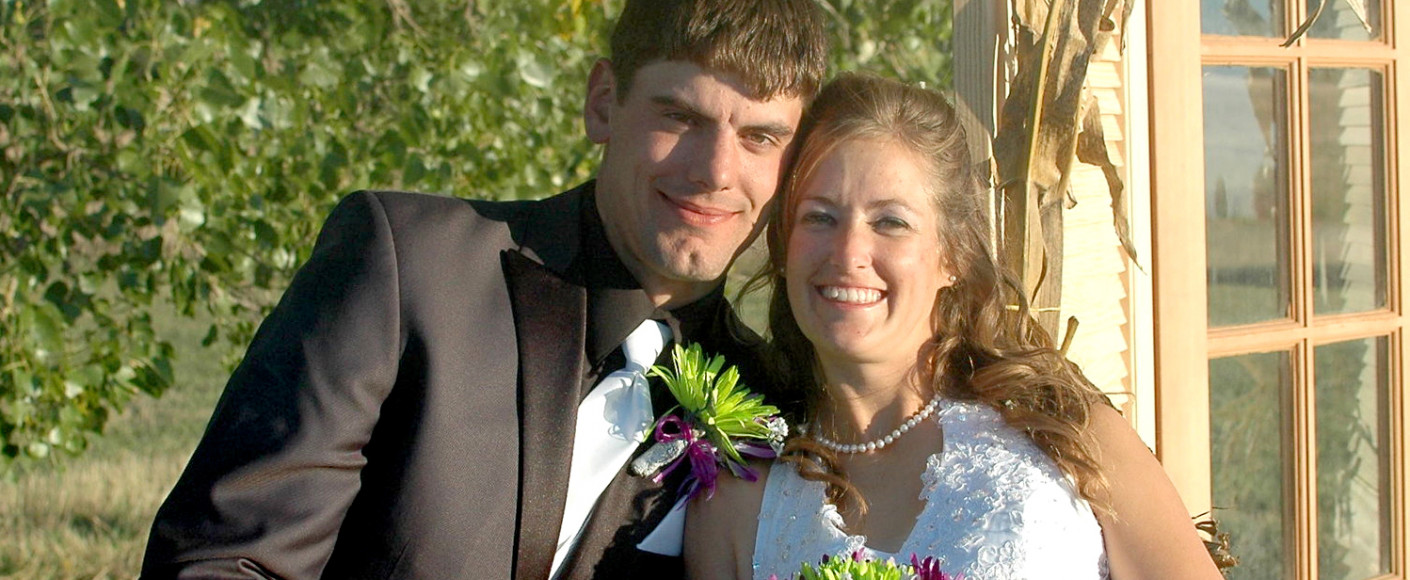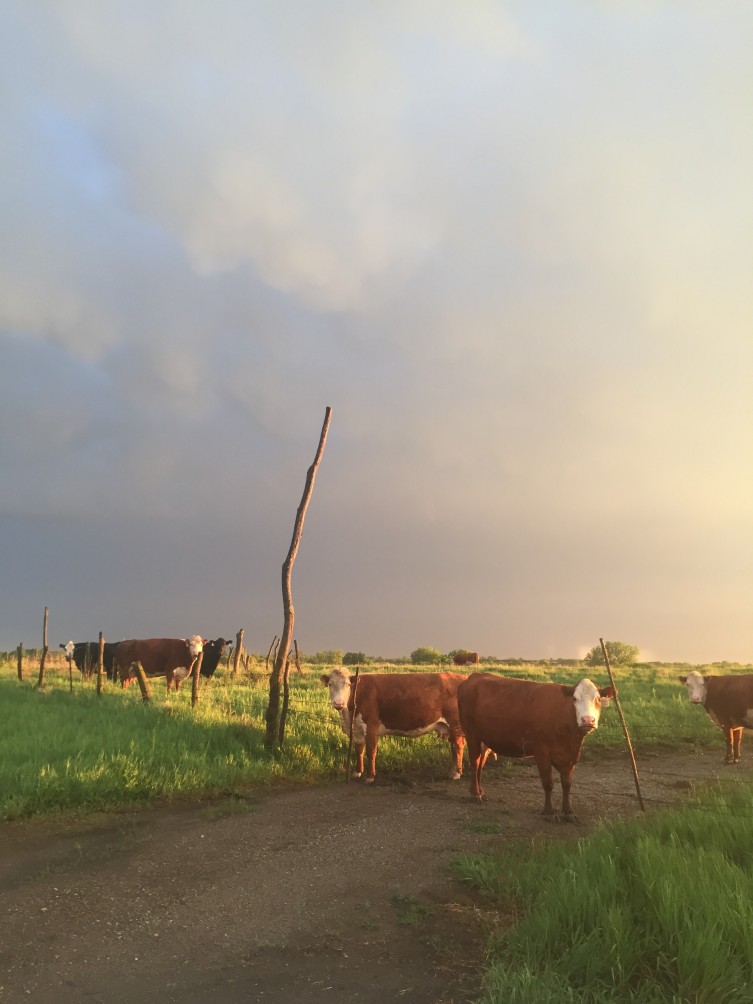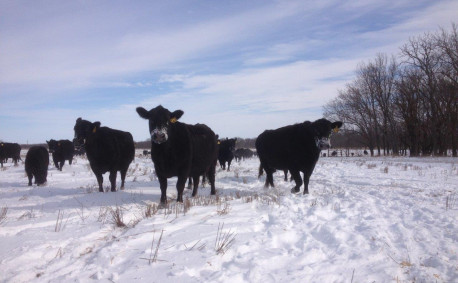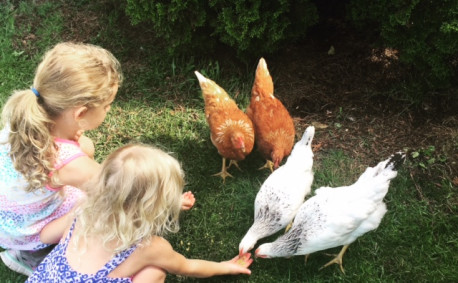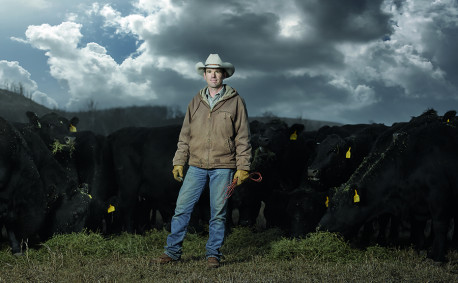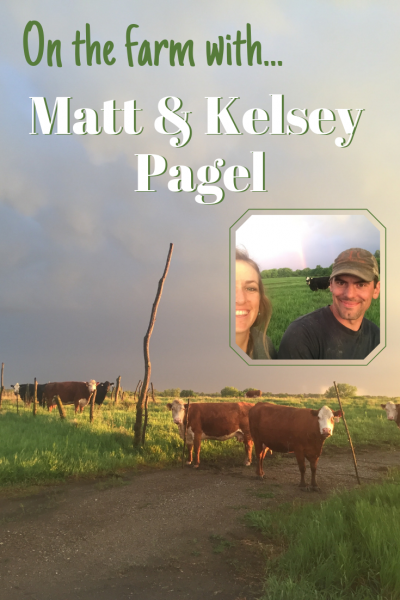Raising Cattle by the Seasons
Kelsey Pagel used to joke she didn’t want to marry a farmer. While Kelsey was growing up, her parents started a farm together from scratch — no small feat! She saw firsthand the hard work and dedication farming required.
“I learned a lot about work ethic on the farm with two parents that work together. They were married. They were business partners. I saw how important it was to be intentional in your relationship,” she said.
Now, Kelsey is married to a farmer. Matt Pagel and Kelsey went to high school at Jackson Heights together, but they weren’t an item. It was a small town, so everybody knew everybody, Kelsey said. It wasn’t until Matt came back from college to work on his family’s farm that the pair started dating. The rest is history.
Together, they work on Matt’s family farm with his father Henry. The farming operation includes land for crops, grazing and a feedlot where the cattle put on weight for finishing. Kelsey gave us a rundown on what happens when each season rolls around.
Farming by the Season
Winter
“Right now, we’re feeding a lot of cattle. This is the time of year that Matt is working on all the equipment, getting it ready for springtime work,” she said.
When the weather’s nice, they repair fencing or keep buildings in order.
Calves are also born three times a year on the Pagel operation, so they won’t have an entire herd finishing at the same time. Winter calving is the most labor-intensive as checks on the pregnant cows become almost an hourly chore. The new babies are kept in groups with their mothers according to their age. This means starting them in smaller groups away from the rest of the herd, which helps keep them from being exposed to germs. (Think about sending your kids off to school. If a cold goes around, all the kids get it. It’s the same idea.) They also rotate where groups of older cattle graze throughout the year depending on how grass is growing in different fields.
Spring
“When grass starts greening up, we work those babies and take them to grass,” Kelsey said.
“Working cattle” involves everything from putting an ear tag in for record-keeping purposes to vaccinations and other measures to make sure they are healthy.
They also plant corn and soybeans and have another group of cattle that starts calving in April. Late spring is when hay season begins. They grow and cut grass for hay to ensure they have plenty of food for their cattle during fall and winter. (It’s the same idea as canning, but for cattle!)
Summer
“In summer we get into haying full bore. We get that second group of cattle worked and out to grass. Depending on the weather, we plant cover crops out in the hay fields and spend a lot of time in the tractor,” Kelsey said. Cover crops help replace soil nutrients and reduce erosion of topsoil.
Fall
Fall is harvest time and another calving season.
“We start feeding cattle the hay that we grew and cut all summer and put cover crops on all of our farmable acres,” Kelsey said.
Responsibility and Sustainability
It’s a busy routine no matter what time of year it is. How do they split up all that work? Kelsey said it usually comes down to routine or availability.
“Right now I’m feeding all the cows in pasture and Matt and Henry are feeding the calves in the feedlot. Matt does all the planting and spraying, but mostly it’s whoever can do it,” she said.
Plus, there’s a retail side of the business to think about — Sustainable Bites. Kelsey and Matt started selling their own meat under that label in 2017. Whenever guests came to visit, they’d compliment the Pagels on how delicious their beef was. They decided to give retail a try because they wanted to share their passion and product directly with consumers.
“We are really proud of our product. We’re proud of the beef we produce and how we produce it,” Kelsey said.
Kelsey said people are getting more curious about where their food comes from. She likes having a chance to explain how they raise cattle and address some misperceptions. For example, some people think feeding cattle corn is bad, but Kelsey explains how this practice — called corn finishing ¾adds marbling and flavor to beef.
“Corn is a natural thing that cattle want to eat,” she said.
The Pagels take a holistic approach to farming, which all comes down to the soil. Like people, soil needs four things to thrive — shelter, food, exercise and water.
Soil is alive, Kelsey explained, and to help protect it from threats like temperature fluctuations, it needs cover. Providing a diverse diet for soil means growing crops of different sizes and root systems, like turnips and radishes they use as cover crops in the fall. (Bonus: The cattle can graze on the variety of plants!) The “exercise” soil gets is in the form of stress. A little bit of environmental stress from the weather is actually a good thing. It helps make soil sturdy so it can weather tough times like drought. Which brings us to water. Soil needs moisture to help all the organisms in it thrive, which in turn makes plants thrive, which in turn makes cattle thrive.
“We really believe that everything is interconnected and if we take care of it, it’s going to take care of us,” Kelsey said.
To learn more about the Pagels, visit their website or follow them on Facebook.
More About
- Favorite foods: "Texas Roadhouse rolls. I just love those things."
- Hobbies: "What spare time? I love to write and I love to blog. Marriage and agriculture are super important to me. I can talk and write about them for days. That’s one of the things I do to de-stress. I also love podcasts and listening to audiobooks. I love learning and growing." Kelsey posts about marriage, life on the farm and other aspects of life.
- What you love about Kansas: "I love the sunsets and sunrises. I love the space."

